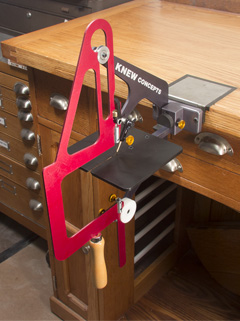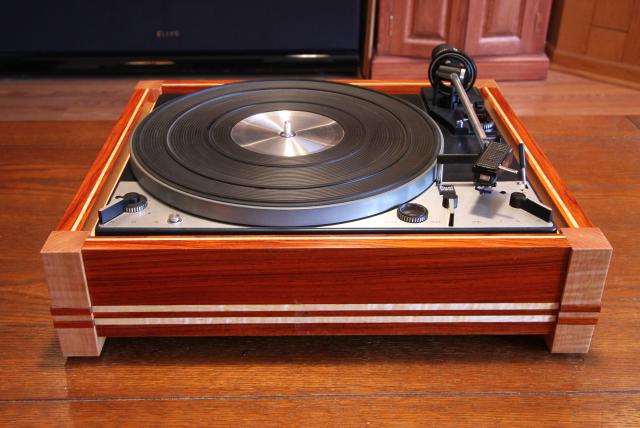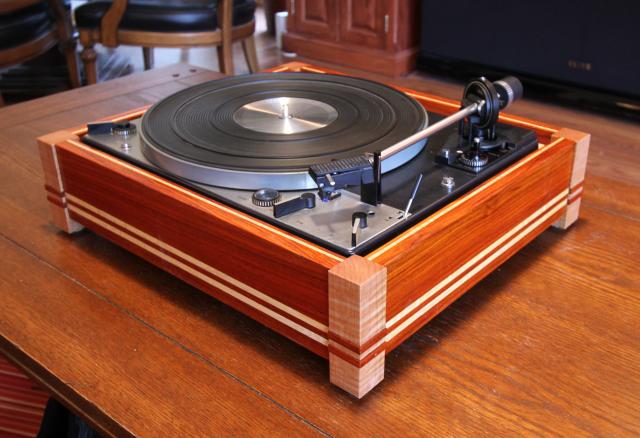Julie,
Like Mike, I think your bench pin is too thin, has a poor mouth shape and is cantilevered too far out. It probably bouces when you are cutting. That will make it very difficult. I make bench pins out of stiff 5/4 material with a taper to 1/8" or so. If you don't have a socket or dovetail for the bench pin, you'll need a robust clamping arrangement.
Jewelor's saw saws are tensioned by flexing the frame while fastening the blade in. Personally, I don't like that and went to the Knew Concepts style. LOML who teaches silversmithing / Jewery making is old school. She cuts even thinner metal with great precision. Practice helps.
She teaches body position (seat very low and piece just below eye level. The saw is only manipulated vertically. If you tip, twist, or otherwise yaw the saw, accuracy is diminished and blades break. I like to sit higher but can isolate my arm movement in a consistant fashion. Turning is often described as "sawing in place." No forward pressure is present.
Shawn
"no trees were harmed in the creation of this message, however some electrons were temporarily inconvenienced."
"I resent having to use my brain to do your thinking"






 Reply With Quote
Reply With Quote





 but w/o the edge guide. I would add the dust collector though, even though I might have to cut open the front. And adding another light might be a good idea. I'm VERY far-sighted and need all the help I can get with up-close work.
but w/o the edge guide. I would add the dust collector though, even though I might have to cut open the front. And adding another light might be a good idea. I'm VERY far-sighted and need all the help I can get with up-close work.
















 I'm not very good with spray cans. My HVLP sprayer is packed away.
I'm not very good with spray cans. My HVLP sprayer is packed away.




